Mizuno Wave Inspire 17 vs 16 Comparison Shoe Review
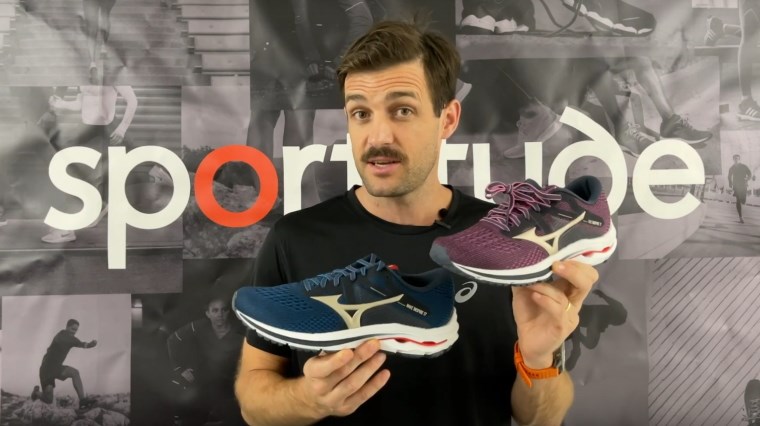
Josh reviews the Mizuno Wave Inspire 17 running shoes, a fresh addition to the stability category for high mileage runners. It sets you up with arch support for overpronation guidance - delivering a smoother and more stable ride for flatter foot types, without feeling intrusive to your running gait.
Mizuno have modernised your ride with a full ground contact outsole – shedding the Trusstic beam of the Mizuno Wave Inspire 16 in favour for a more seamless connection with the ground from heel-to-toe. Underneath the forefoot, a balance of flexibility and support springs you into your next stride.
Lightweight Enerzy foam provides shock-absorbing compression, while the Double Fan Wave Plate balances this plushness out with improved integrity – combining impact protection, structure and support. A top layer of full-length U4ic cushioning elevates the responsiveness for a snappy toe-off.
Mizuno have the internal heel counter spot on, wrapping your rearfoot with a secure fit to prevent heel slippage on the run. The upper is complete with supportive overlays and engineered air mesh for a blend of strength and breathability.
A shallower forefoot fit makes the Mizuno Wave Inspire 17 the go-to for road warriors that prefer a snugger hold on their foot over stacks of wiggle room.
Check out the review with full transcript below.
Hey guys, Josh here from Sportitude Running and today it is shoe review time. We're going to be talking all things Mizuno Wave Inspire 17. This shoe has had quite the update from where it was with the Mizuno Wave Inspire 16.
We're talking about a new execution with the outsole, there's some more goodness in the midsole and they have ever so slightly manipulated the support and the breathability in the upper.
We're going to get through quite a bit in today’s review. I'm going to talk about the foot type that could be considering the Mizuno Wave Inspire 17, profile that runner and see where it fits into your potential shoe rotation.
We’ll give you all the information you need at home to potentially make your next shoe choice. Without further ado let's get stuck in.
Runner Profile
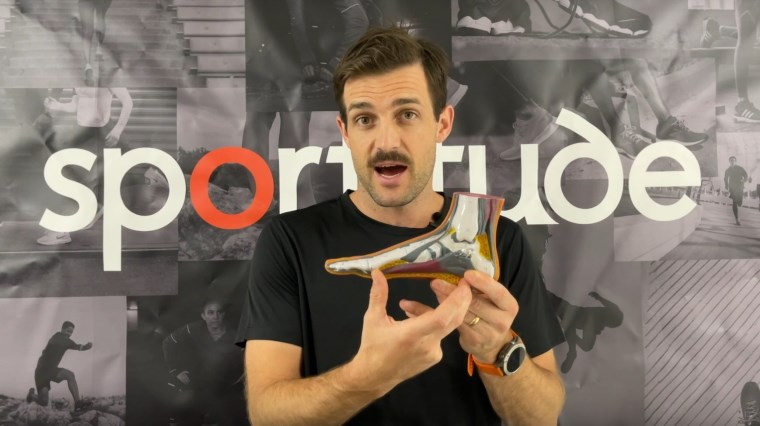
What we'll do first up is talk about the foot type that should be considering this shoe. This shoe sits on a slightly stable platform. We have a little bit of arch support on the inside and Mizuno use that with Double Fan Wave Plate technology.
When we're talking about medial support, we're talking about a foot that is slightly flatter in the arch in a static position. It’s for the runner that has an entry point on the heel, comes through to midstance and has a tendency to roll in over the arch. Therefore, we'll see a little bit of rotation through the shin, knee and hip. The concept of the arch support is to reduce the impact of that overpronation.
The shoe is on a cushioned platform, so we have a really soft entry point and then a relatively responsive top layer with their foam which we'll get to into the midsole component of the review.
Outsole
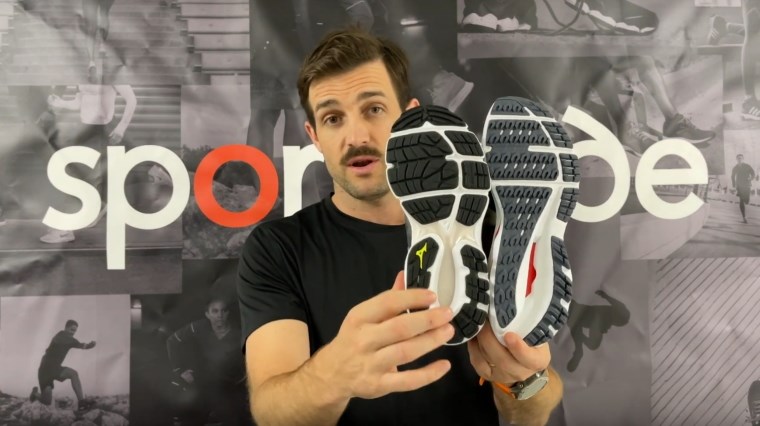
In terms of the engineering of this shoe, we're going to start from the ground and work our way up. The outsole is probably the biggest change with this shoe and as you can see underneath we have full ground contact. From the toe right through to the heel you can see there's a component of rubber the whole way through.
Underneath the Mizuno Wave Inspire 16 there is a slight separation between the heel unit and the forefoot unit. It's mainly to do with the Trusstic beam. We still see Trusstic beams in running shoes to this day but when we come to the middle part of 2021 I will be very surprised if there's any serious contenders in that mileage category that have a Trusstic beam.
We're seeing Mizuno no longer showing it, Asics will be doing the same come the middle of next year and Brooks, New Balance and Saucony have been doing it for a few years now where they've removed or reduced the Trusstic system by putting a midsole and outsole component over the top.
With that outsole configuration being full ground contact, you still have your element of flexibility through the forefoot. You have two flex grooves and a three-quarter flex groove in regard to the flexibility. You don't want to lose that nice and easy transition from midstance to toe-off. You want to make sure the shoe is flexing in all the right areas but supporting that forefoot at the same time.
You can see how it's encapsulated and sits right underneath your big toe, so it doesn't put too much load on that toe when it's going through midstance to toe-off. You don't want to increase the range of movement through that toe too much so that's why brands in their supportive shoes are configuring the outsole to look a little bit like this. It gives that toe a little bit more structure.
The other thing to note is there's a bigger cutaway in the midsole. Yes, it's full ground contact but they have this vertical decoupled line that runs right up to the midstance section that creates this large horseshoe shape at the rearfoot. The reason Mizuno have been able to do that is more to do with the midsole technology. The foam between the Wave Plate and the ground is their new Enerzy foam.
Midsole
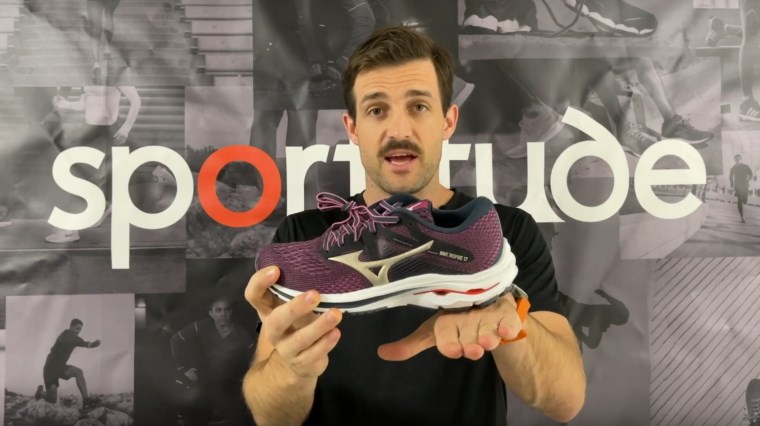
Let's get stuck into the midsole now. The Enerzy foam is a foam that they've used for a couple of seasons now. They've rolled it out in the Mizuno Wave Sky and now they're introduced it into more of their premium road running shoes. That foam is very soft and it's soft regarding where it sits.
It sits underneath the Wave Plate so for that first entry point for your heel striker you're getting a nice compression underneath your foot. Therefore, they're able to take weight out or less of a traditional EVA foam out from that component because this foam is doing a lot more for the runner. You can reduce the weight but still keep it nice and soft underneath that entry point.
The Wave Plate runs right through to just after midstance in the medial to lateral side. The Wave Plate is structurally placed to give the shoe a little bit of integrity and your foot a bit more support when it contacts the ground.
The foam on top of the Wave Plate all the way through to the forefoot is U4ic foam. They use U4ic and U4icX in last season's model. The U4icX was underneath the Wave Plate. The U4ic cushioning system is a slightly more responsive layer and that runs all the way on top of that Wave Plate.
They're essentially using the same concept with the Mizuno Wave Inspire 17 and with the Wave Inspire 16. That U4ic cushioning system runs the whole way through to the forefoot so you get a really good combination of compression on entry.
As you come through to midstance to toe-off you're getting that push out of your gait cycle which is what that U4ic cushioning system does really well inside this shoe. As we touched on in the intro, it is a supportive shoe. On the medial side you can see they've got that Double Fan Wave Plate which is strategically placed underneath the arch to hold that midsole up during the life of the shoe.
From that first kilometre to the last kilometre, the foam around the shoe will essentially break down and that happens with running shoes. However, the support system will stay nice and structured throughout the life of the shoe.
There’s a slight change in how they've executed that Fan Wave technology. In the old Mizuno Wave Inspire 16 it's a little bit higher, so it covers a bit more of the surface area on that medial side. They've shaved it down a little bit so it's not quite as noticeable on the foot.
However, if you cut it away it does come a little bit more through the midsole on the medial side. You get a slightly more dynamic supportive shoe without feeling like you've got that on your foot. In my opinion when I’ve worn a Wave Inspire, from that first step-in feel you know you've got an arch support shoe on your foot. It's just there and it's noticeable. For me it was OK.
I didn't mind running in them and certainly it didn't change the way I ran. I just knew I had an element of arch support. There are some runners out there that want that feel. They want to step their foot into a shoe and go, “Aha, there's the arch support, I’m confident with that”.
You may not get that support as much inside the Mizuno Wave Inspire 17. When I stepped into this I almost felt like I had a stable neutral shoe on my foot. It felt along the lines of what the Brooks Ghost does in that category and even the Brooks Adrenaline. I know that contradicts those two shoes but it’s a slight take on dynamic support system and the reason they’ve been able to do that is a lot to do with the increased surface area underneath the foot.
You've got a little bit more real estate underneath so you get a little bit more control and more of a stable platform. You can ever so slightly reduce the impact of that medial support because the shoe is going to run nicer, a lot smoother and it won't be quite as intrusive underneath that arch. I tip my hat to Mizuno; I think they've executed a very good arch support on the Mizuno Wave Inspire 17.
Just the last thing to touch on for the midsole, let's go into the heel-to-toe drop. It’s a 12mm offset - that’s on the higher aspect of what we classify as a norm out there in the industry. Generally speaking, we see the majority of road running shoes be on 8mm to 10mm heel-to-toe gradient.
Some high mileage shoes drop down to 6mm but at a 12mm offset that's a pretty generous heel-to-toe lift. It's 31mm in the heel and 19mm in the forefoot and that's for both men's and women's.
I would probably say that for last year's model it feels like a 12mm drop, no doubt about it. For me, the Mizuno Wave Inspire 17 feels a little bit more like a 10mm drop to be completely fair.
I didn't notice that heel-to-toe gradient as much as what I have in previous models. I personally think that's a good thing. It's changing that first fit and feel on your foot. I think that will be a good thing for this shoe because it will certainly be a lot more competitive against other shoes out there on the market.
Upper
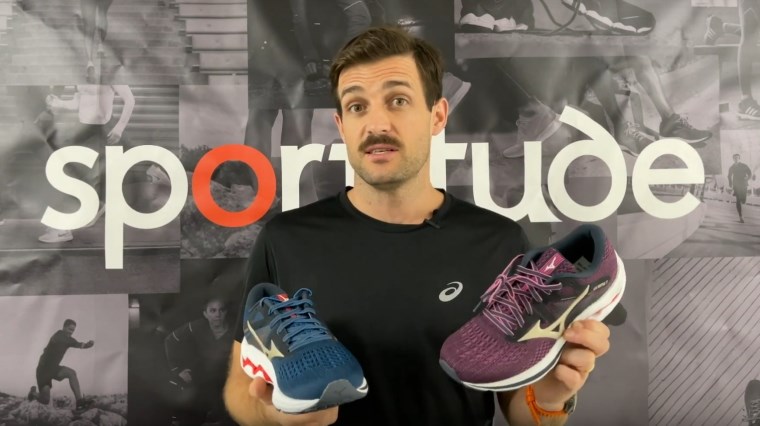
Let's dive into the upper. I think Mizuno over the last five to six years have done an exceptional job with their heel counters and the Wave Inspire 17 is no different. There is an internal heel counter set up with the plastic system which sits inside the collar.
It sits around the back of your heel, so it keeps your heel nice and secure for that first entry. You're not going to be moving around on the platform. This year they've gone a little bit lower with the height of the heel counter.
You can see almost like a bucketed system. The midsole wraps around the heel a little bit more so you can reduce the amount of height you have on the heel counter. It still runs really stable, but it just doesn't climb up your Achilles as much as previous models.
The memory foam which sits on the inside part of the heel collar is almost perfect. It’s the perfect combination of a little bit of padding but with that little squeeze and pinch around the back of your Achilles. You get that nice and secure fit to minimise that vertical movement and friction at the back of the shoe.
The other great thing they've done is increase the overlay support through the midsection both on the medial and lateral side, purely by strategically placing some of these cosmetic strips and that little V.
From foot strike to the midstance phase of your gait cycle, you don't want your foot moving around on the platform as that would defeat the purpose of the midsole. You want to keep it nice and secure on top and that's exactly what those overlays do.
As you come through to the forefoot it is a double layered or engineered air mesh as Mizuno call it. Essentially that is a nice strong set-up, but you get plenty of breathability. The holes they have through the forefoot are a little bit larger and they can do that because the underlay is stronger but nice and breathable too.
In terms of the actual fit of the shoe, I like the change. It's a little bit shallower on top, so you certainly feel like you have more security through that forefoot. I've always found with Mizunos over the last couple of seasons that there's a bit of wriggle room through that forefoot which again has probably been a good thing for a lot of runners out there.
However, for me personally that in conjunction with a couple of other facets was why I didn't use earlier models of this shoe for my mileage running. I could certainly see myself doing some Ks in the Mizuno Wave Inspire 17 because the fit is pure, it’s nice and secure but not too tight.
I love what they're doing with the upper with keeping your foot on the platform. This change to the full ground contact in conjunction with that execution of softness and responsiveness shows they're doing a lot in this shoe which is fantastic. I really like what they're about this year.
Widths
Like I’ve done in my previous shoe reviews, I'm calling out the fact that when a brand makes a shoe in widths they actually care, and Mizuno have done it again. With the ladies’ you have a B width which is standard and then you have a D width which is slightly broader, so two widths on offer.
In the men's you have a D standard and a 2E width which is slightly broader as well, so two widths again with that shoe.
Please note that the widths are in different colours and there'll be links to the product pages below to take you through to have a look at what colours are on offer for each and every width.
One thing that I would like to say with Mizuno is that the Mizuno Wave Inspire for the ladies’ used to come in 2A which is a narrow width. Over the last couple of seasons, we've seen narrow widths fall away from some suppliers and some brands.
There are a couple of brands out there that are still doing 2A widths and I hope that Mizuno consider making a 2A width in this shoe again. It's a very popular width here in Australia and I would presume also globally.
That would be my only small bit of criticism about the Mizuno Wave Inspire 17 because it's ticking all the boxes for me. Certainly, a narrow width in the ladies’ model would put the cherry on top.
The Wrap Up
There we have it, the Mizuno Wave Inspire 17. Just to recap on this shoe, I love the full ground contact underneath. It provides a more seamless entry from midstance to the toe-off point. The shoe runs really smoothly now which is fantastic.
Well done Mizuno regarding the execution of the midsole. It’s a nice soft landing zone underneath the heel. The transition from that mid to toe-off point with the U4ic cushioning system provides a perfect level of cushioning and responsiveness. The execution on the midsole is fantastic.
Up top there’s a couple of changes with regards to how the shoe fits through the forefoot with a little bit more of a secure, shallower fit but certainly a very breathable shoe.
It’s Mizuno’s number one shoe globally in sales for runners in need of arch support. Mizuno have done it again with the Wave Inspire 17. It’s a credit to Mizuno and their engineering department.
If you have any questions about this shoe please contact our Sportitude shoe experts. If you have tried it or you’ve ran in it I would love to hear how you have gone. I love listening to how people experience a specific shoe or a new shoe.
Please subscribe to the Sportitude YouTube channel if you haven’t already done so. Until next time stay safe and be kind to each other.
We'll see you on the road, take care.
FEATURES
Mizuno Wave Inspire 17
- Support: Stability
- Upper: Mesh
- Midsole: Mizuno U4ic, Mizuno Enerzy
- Heel Height: 31mm
- Forefoot Height: 19mm
- Offset / Drop: 12mm
Men
- Weight: 310g / 10.9oz
- Widths: D (standard), 2E (wide)
Women
- Weight: 260g / 9.2oz
- Widths: B (standard), D (wide)
Mizuno Wave Inspire 16
